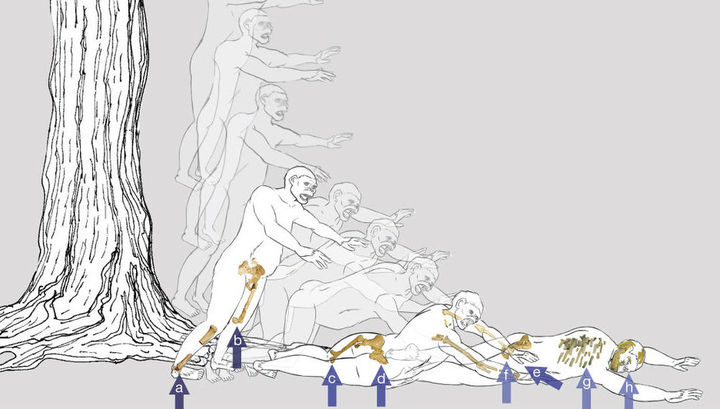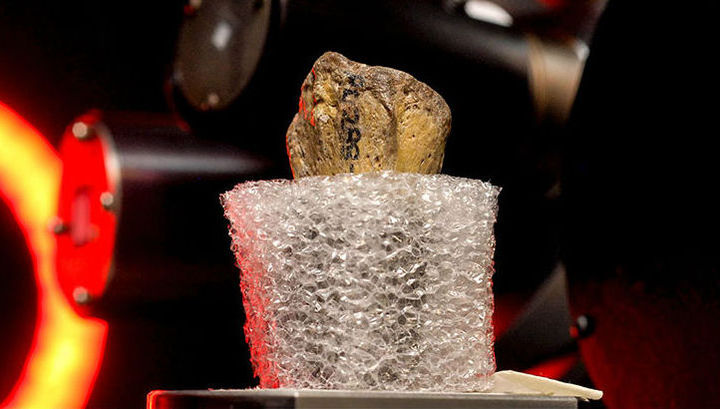Perhaps one of the most famous human ancestors – the primacy of about one meter in height, which was soon nicknamed Lucy (Lucy) – helped to make not one bright title since 1974. This year, the Ethiopian scientists have discovered the skeleton of a female specimen of Australopithecus afarensis (Australopithecus afarensis). Since then, scientists had scrutinized every aspect of her life. Archaeologists and anthropologists interested in everything, including how it went on the ground and what was the structure of its skeleton. Now, a new dispute over how Lucy had died – it was about 3.2 million years ago
The latest analysis of her bones fractures, conducted by researchers from the University of Texas at Austin, suggests that it is. fell from a tall tree and severely hit the ground, breaking with several bones.
Paleontologist John Kapelman (John Kappelman) and his colleagues studied the existing partial skeleton of Lucy (it survived only about 40 percent of its bones). The researchers used high-resolution computed tomography scan of the remains of Lucy, and then created 35 thousand cross sections of its bones. According to him, scientists have tried to reconstruct the events that led to the fatal injury of an ancient primate.
After a careful study of the bones in the form of 3D-models Kapelman noticed an unusual “pattern” in the humerus. The scientist decided to look for similar examples in the medical literature and found that a similar picture is observed in the so-called “chetyrёhfragmentarnom fractures of the proximal humerus.” It turned out that this is a typical fracture of the humerus, where the blade is suffering. Today so much damage are recorded only when people fall from a great height, for example, with open arms.
Kapelman use a laser printer to create a 3D-model of a broken humerus Lucy and then showed the result of orthopedists. Nine out of ten experts came to the conclusion that this is the “chetyrёhfragmentarny fracture of the proximal humerus”.

The scientist also studied a similar, but slightly less heavy fractured left shoulder Lucy, right ankle, the knee and the first rib and found them” signs of serious injury ” . According to the researcher and his colleagues, the forces that are capable of causing such serious damage could occur if Lucy had fallen from a height of over 13 meters. Such a height comparable to the four-story house, or the tops of tall trees, for example, such as acacia
In addition, fractures do not show any signs of healing, which suggests:. Lucy died from injuries sustained in the fall
But what Lucy could fall so badly? The most likely explanation – it has fallen from a high tree, as is sometimes the case with chimpanzees. Although Lucy was already erectus is, by hypothesis the researchers, is likely to climb trees to sleep or rescue from predators.
Thus, the study offers a new perspective on the mysterious death of one of the most famous human ancestors. However, new research work not only describes the cause of death of Lucy, but also raises the issue of how much time Australopithecus afarensis was carried out on the trees.
Lucy had a brain and a body like a large chimpanzee individuals (and probably, she slept on trees), but she has already walked on the ground with your back straight. By assumption, scholars, views Lucy probably already lost its maneuverability and agility necessary for life in the trees to adapt to life on land.
According to William Yungersa (William Jungers) from New York University, the conclusions Kapelmana research group is quite convincing, as carried out a detailed and comprehensive analysis of the injury Lucy. But other scientists are more skeptical.
According to third-party paleontologists injury skeleton looks as well as fractures of all kinds of animals, the remains of which were previously in Ethiopia and elsewhere. It is most likely that skeletal damage happened after the death of Lucy “as a result of geological processes,” said Tim White of the University of California at Berkeley. “The authors make no attempt to test alternative hypotheses about how were received fractures, for example, during the fossilization process or erosion.” – Said he
According to Kapelmana, tiny fragments and debris left around. broken bones indicate that no fractures were caused by, for example, flooding. According to him, in this case, all the tiny fragments would have long claimed the water.
“Damage to the bones of Lucy totally mediocre” – agrees another scientist William Kimball (William Kimbel) from the University of Arizona.

“The bones of animals – antelopes, gazelles, elephants, rhinos and giraffes – demonstrate similar fractures and you can be sure they do not exactly fall from the trees, “-. says paleontologist Donald Johansson (Donald Johanson) from the University of Arizona. But, in his opinion, these findings, as well as high-profile debate will encourage scientists to further research and study of the causes of fractures primates before and after death.
The research team Kapelmana was published in the scientific journal Nature.
Let us add that the earlier “Vesti.Nauka” talked about other paleontological discoveries related to the ancestors of man: in Ethiopia, scientists have discovered the remains of the ancient ancestor of people
.
No comments:
Post a Comment